Sanc·tu·ar·y (săngk′cho͞o-ĕr′ē)
A sacred place.
The condition of being protected or comforted.
A place of refuge.
A reserved area in which birds and other animals, especially wild animals, are protected from hunting or disturbance.
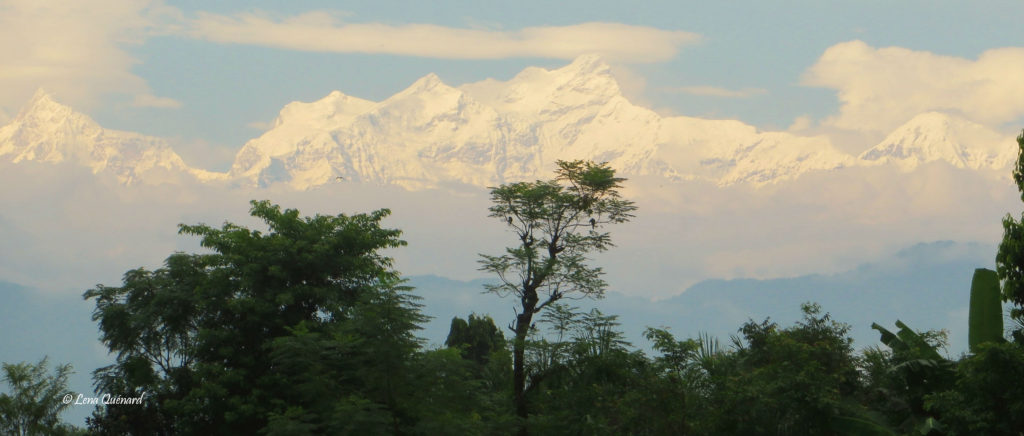 It was early January when I arrived back in Katmandu. I spent my first evening at the fireside of a local restaurant, enjoying a delicious and spicy dal. Winters in the city are cold, the narrow alleys are frosty and only if you find a sunny terrace on the heights you will then warm up a bit.
It was early January when I arrived back in Katmandu. I spent my first evening at the fireside of a local restaurant, enjoying a delicious and spicy dal. Winters in the city are cold, the narrow alleys are frosty and only if you find a sunny terrace on the heights you will then warm up a bit.
The next day I had a long awaited meeting with a lodge owner from Chitwan with whom I have been in touch for some time. As his final rental proposal was unreasonably high, the next day I flew to Chitwan with other lands in sight.
There I found dear friends Shanti Chaudhary and Lauren Kate. We had some adventures on misty mornings and shared precious moments warming up by the fire in the chilly nights of Sauraha.
A few days later, veterinarian technician Kiran Rijal, foot trimming partner of Carol Buckley of Elephant Aid International, made some space in his busy schedule to continue my training in elephant foot care with the privately owned elephants in Sauraha. My days started then to be busy, following Kiran’s instructions and observing his work with the elephants.
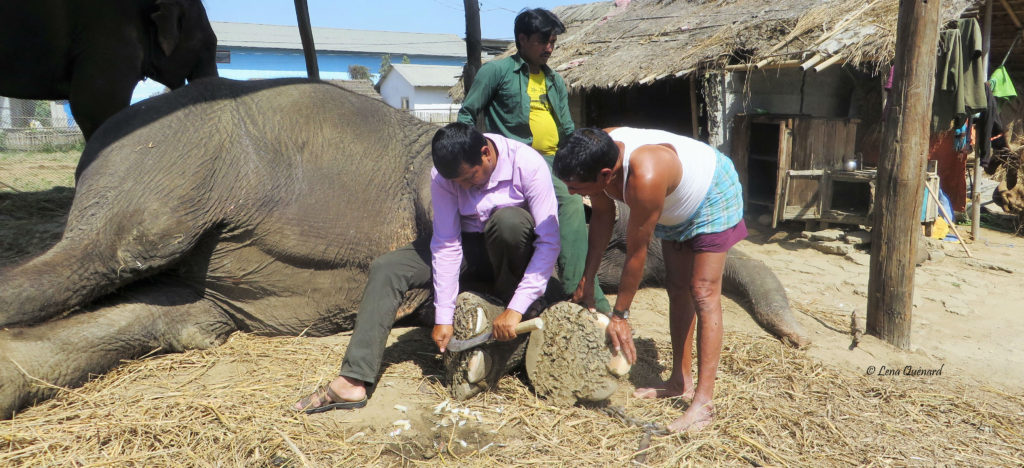 Mostly due to a poor diet and a lack of proper care, the vast majority of Sauraha captive elephants have feet issues. Most of the elephant drivers/mahouts are not trained in elephant foot care and don’t have adequate tools to trim their feet.
Mostly due to a poor diet and a lack of proper care, the vast majority of Sauraha captive elephants have feet issues. Most of the elephant drivers/mahouts are not trained in elephant foot care and don’t have adequate tools to trim their feet.
The mahouts are often blamed for whatever happens to the elephants – but – the responsibility to improve their knowledge and the elephant’s welfare belongs to the elephant owners. Many mahouts show a real interest in trimming their elephant’s feet but they don’t have the resources to do it properly.
However, I was glad to meet an elephant owner who has decided to improve the health of his elephants by planting elephant grass in his field to feed them properly. His mahouts had calm manners when managing the elephants. The elephants seemed healthy with beautiful skin and their nails were well trimmed. For his three elephants not to be standing in their droppings, he made a slight slope, so that the urine can flow down and away. This seems a minor improvement but it makes a big difference for those elephants who spend 10 to 15 hours chained in the same place. A clean stable also allows them to sleep in a more decent manner. This case shows that it doesn’t take much to improve the life of owned elephants, but it has to be a something the owner wants to do, for the good of his animals, not for any monetary gain.
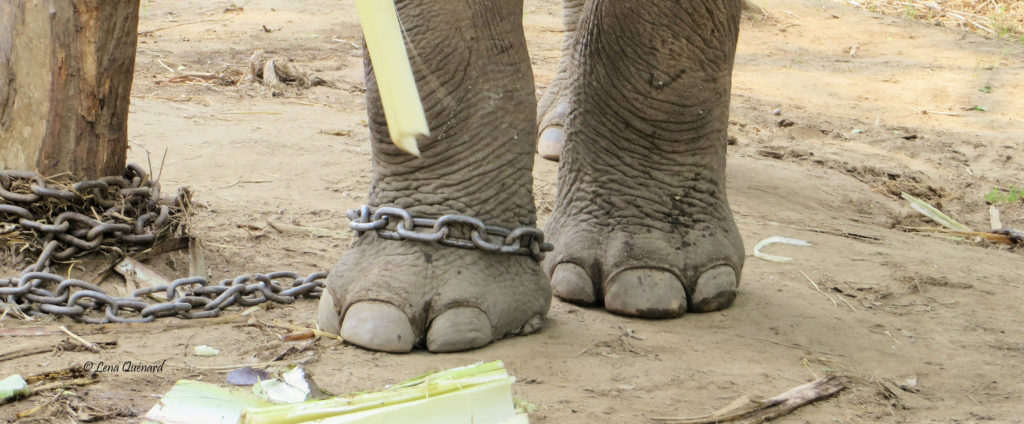 Captive elephants are still wild and will always be. They remind us of this when they have the opportunity.
Captive elephants are still wild and will always be. They remind us of this when they have the opportunity.
Elephants will occasionally escape from captivity, run to the jungle and hide – sometime for a few days, before being irremediably captured and brought back to work. On their long walk back to the village, the sad and hopeless stares of these magnificent animals can only be read as defeat. While I witnessed this sad scene, I couldn’t help but feel a strong sense of disappointment in our species, as we have failed to live in harmony with nature. Instead we have only succeeded in micro managing and destroying it.
 At the end of each day, the elephants walk through the busy traffic of Sauraha, returning from the riding stations to their shelters they left at dawn. And each evening, at the same time, you will hear from afar, two female elephants, trumpeting and rumbling at the joy of being reunited, even if only for a few seconds. When their paths cross, they run to each other and demonstrate what true love is. In this moment, there is so much joy and affectionate touching shared between these two girls that they totally ignore the mahouts on their neck, urging them onward with the bull hook. This demonstrates how much captive elephants desperately need company and how strong and important are their bonds. Sadly, these two don’t belong to the same owners and are chained in different shelters.
At the end of each day, the elephants walk through the busy traffic of Sauraha, returning from the riding stations to their shelters they left at dawn. And each evening, at the same time, you will hear from afar, two female elephants, trumpeting and rumbling at the joy of being reunited, even if only for a few seconds. When their paths cross, they run to each other and demonstrate what true love is. In this moment, there is so much joy and affectionate touching shared between these two girls that they totally ignore the mahouts on their neck, urging them onward with the bull hook. This demonstrates how much captive elephants desperately need company and how strong and important are their bonds. Sadly, these two don’t belong to the same owners and are chained in different shelters.
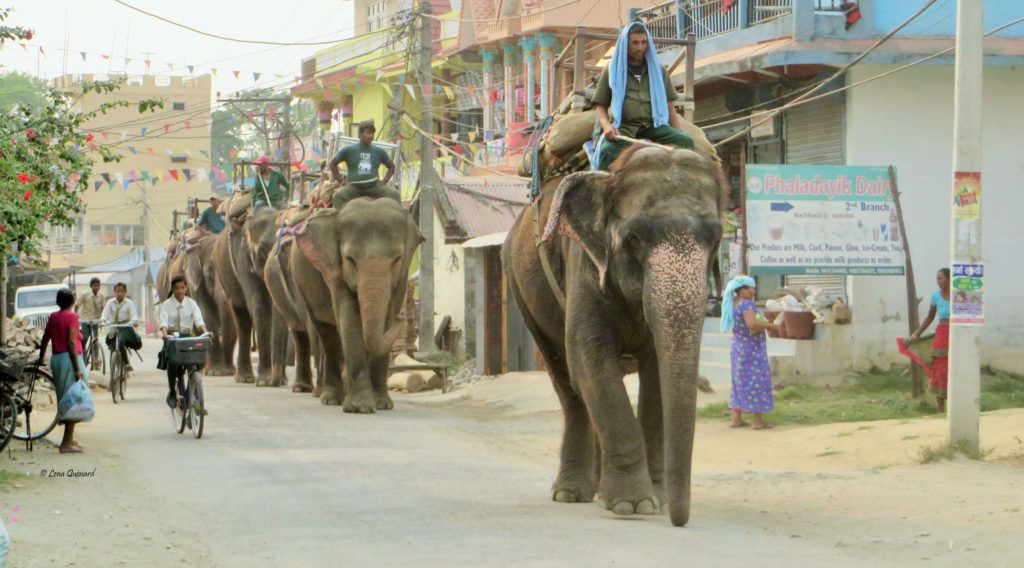 When not with the elephants, I spent days on the back of a motorbike, my face incrusted with dust, looking for parcel after parcel of land. Some too big, some too small, some many trees, some not at all… There were many high and low moments during this time. It was mid-March and the days were getting hotter. I returned to my guesthouse at the end of each day feeling optimistic and energized. Some areas were very wild and the energy of the jungle was incredible! The search still continues. It is a long and complicated process but I have good contacts, they are searching for me and sending me info each day.
When not with the elephants, I spent days on the back of a motorbike, my face incrusted with dust, looking for parcel after parcel of land. Some too big, some too small, some many trees, some not at all… There were many high and low moments during this time. It was mid-March and the days were getting hotter. I returned to my guesthouse at the end of each day feeling optimistic and energized. Some areas were very wild and the energy of the jungle was incredible! The search still continues. It is a long and complicated process but I have good contacts, they are searching for me and sending me info each day.
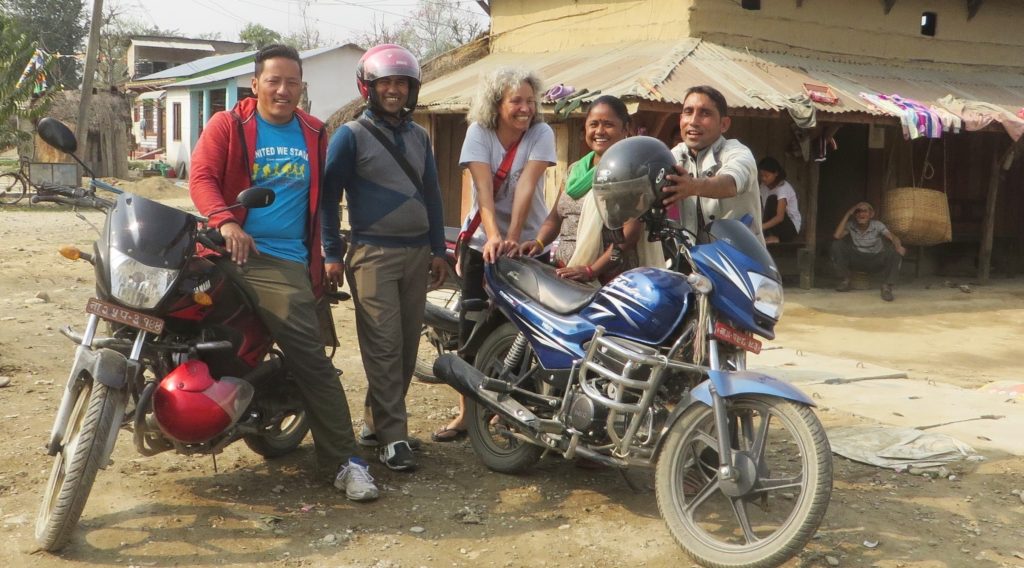
The goal is to create a fresh and unique project – a humble Sanctuary for animals, whether wild, captive or domestic.
‘Sanctuary’ is a term often mis-used and misunderstood. A place does not have to be big or contain many animals to be a Sanctuary. True Sanctuary is about priority of care, consideration and above all – RESPECT and autonomy for the animals within the boundaries.
HOW CAN YOU HELP?
This project is in its early stages and needs your generosity to become a reality!
Funds are needed to lease a lodge and the surrounding land, build chain free enclosures as well as for ongoing maintenance so the project can run smoothly.
Once we have the lodge, limited numbers of guests can come to stay and learn about elephants while supporting our work. Income raised from guests will directly support the project.
We look forward to sharing this journey with you!
